
GREENLAND EXPEDITIONS
Greenland Highlights

Epic Ice

Deep Fjords

The Northern Lights











Why Quark Expeditions?




We have a deep passion and love for these regions. And with 30 years specializing in polar-only travel, we have built the best team in the business, with the deepest knowledge and know-how.

We were the first to do it. And, even today, our team continuously strives to push the boundaries of polar travel, with industry-first innovations, the most innovative itineraries and beyond.

Whether on one of our expedition ships, in a helicopter, on a zodiac, kayak or bike, camping, hiking or immersing in a local cuisine or culture, our guides will get you closer, get you off-ship more and make your polar adventure unforgettable.

We want you to leave the polar regions with stories to last a lifetime. The experience of our team and our unrivaled guide-to-guest ratio means we’re able to remain agile, so each day you have more unforgettable moments.

Expeditions to Greenland
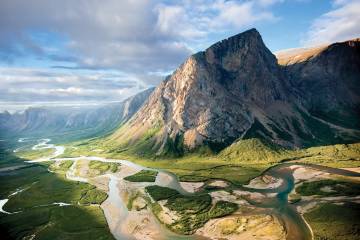
Greenland to Newfoundland: Mountains, Wildlife and Viking History
Incl. Charter Flight & Hotel
Charter Flight and Hotel Package
- One night’s pre-expedition hotel accommodation in Reykjavik
- Group transfer from the Reykjavik hotel to the airport on Day 2
- Charter flights between Reykjavik and Kangerlussuaq
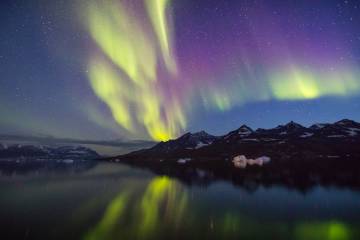
Adventures in Northeast Greenland: Glaciers, Fjords and the Northern Lights
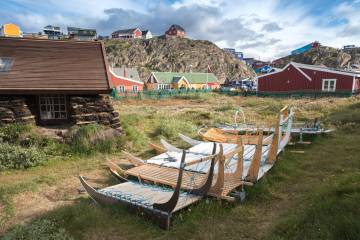
Gems of West Greenland: Fjords, Icebergs, and Culture
Incl. Charter Flight & Hotel
Charter Flight and Hotel Package
- One night’s pre-expedition hotel accommodation in Reykjavik
- Group transfer from hotel to Reykjavik Airport.
- Charter flight from Reykjavik to Kangerlussuaq
- Group transfer from the ship to the Kangerlussuaq airport on disembarkation day
- Charter flight from Kangerlussuaq to Reykjavik
- Group transfer from Keflavik airport to hotel
- One night’s post-expedition hotel accommodation in Reykjavik
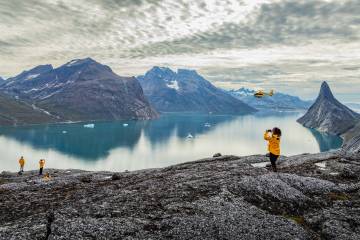
South Greenland Adventure: The Majestic Alpine Arctic
Incl. Charter Flight & Hotel
Charter Flight and Hotel Package
- One night’s pre-expedition hotel accommodation in Reykjavik
- Group transfer from hotel to Reykjavik Airport.
- Charter flights between Reykjavik and Nuuk
- Group transfer from the ship to the Nuuk airport on disembarkation day
- Group transfer from Reykjavik airport (Keflavik) to hotel on disembarkation day
- One night’s post-expedition airport hotel accommodation in Keflavik
- Shuttle transfer to Keflavik airport on last day of itinerary
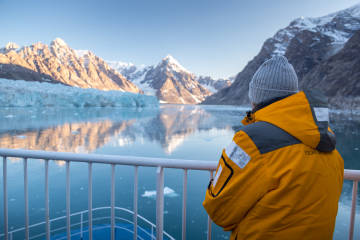
Three Arctic Islands: Iceland, Greenland, Spitsbergen
Incl. Charter Flight & Hotel
Charter Flight and Hotel Package
- One night’s pre-expedition hotel night at Helsinki airport hotel, with breakfast
- Charter flight from Helsinki to Longyearbyen
- Arrival transfer in Longyearbyen
- Arrival transfer in Reykjavik to central downtown location

Under the Northern Lights: Exploring Iceland & East Greenland
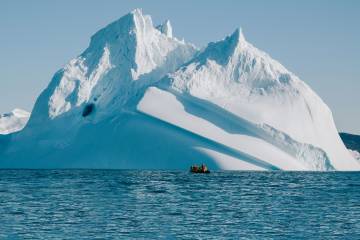
West Greenland Ice Odyssey: Glaciers and Icebergs
Incl. Charter Flight & Hotel
Charter Flight and Hotel Package
- One night’s pre-expedition hotel accommodation in Reykjavik
- Charter flight from Reykjavik to Kangerlussuaq
- Group transfer from the ship to the Kangerlussuaq airport on disembarkation day
- Charter flight from Kangerlussuaq to Reykjavik
- One night’s post-expedition airport hotel accommodation in Reykjavik
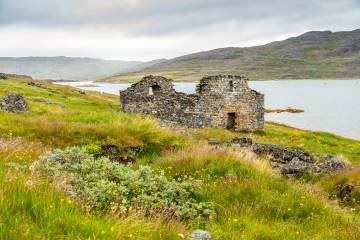
Wild Fjords of South Greenland: Land of the Vikings
Incl. Charter Flight & Hotel
Charter Flight and Hotel Package
- One night’s pre-expedition hotel accommodation in Reykjavik
- Group transfer from the Reykjavik hotel to the ship on Day 2
- Group transfer from the ship to the Nuuk airport on disembarkation day
- Charter flight from Nuuk to Reykjavik
- Group transfer from Keflavik International
- One night’s post-expedition hotel accommodation in Keflavik
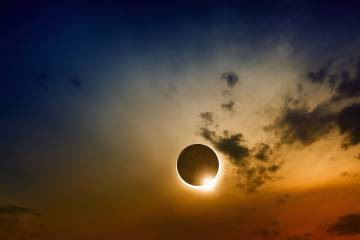
Iceland to Greenland: Total Solar Eclipse
More About Greenland

Explore Top Greenland Fjords: Ilullisat Icefjord, Alpefjord & More

5 Reasons Greenland Should Be Your Next Arctic Expedition Destination







